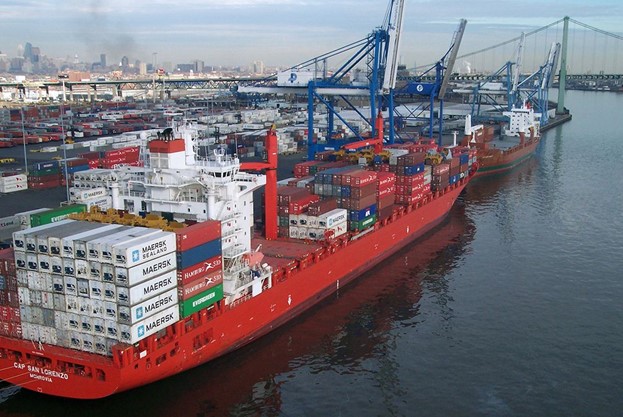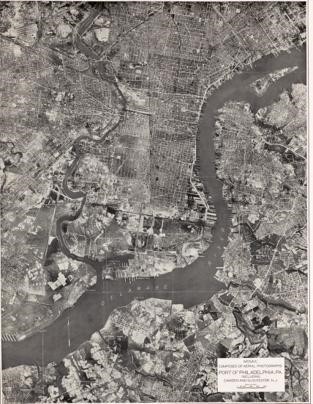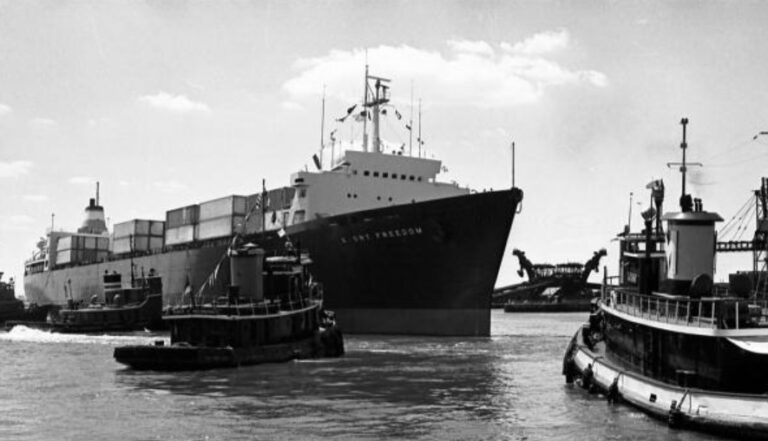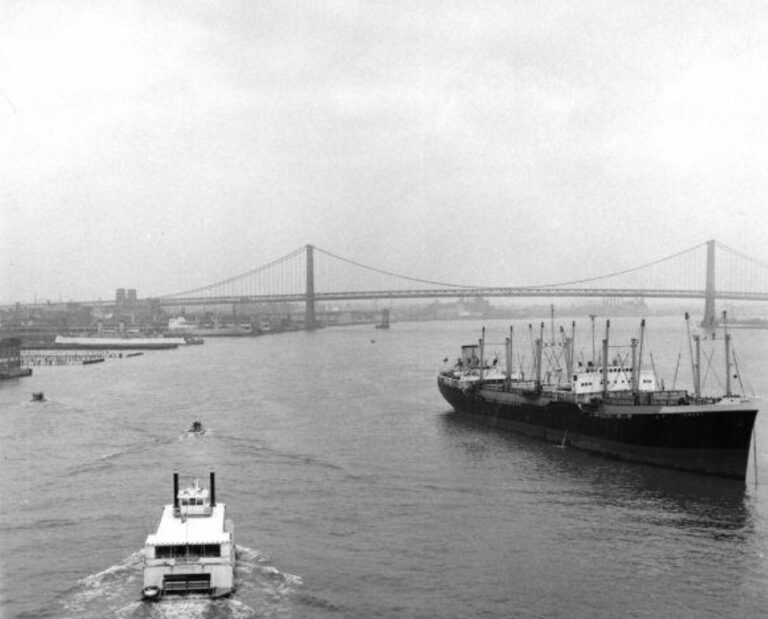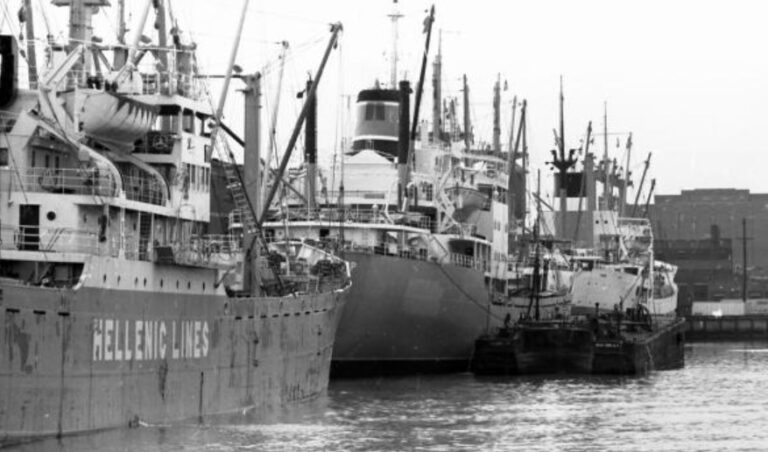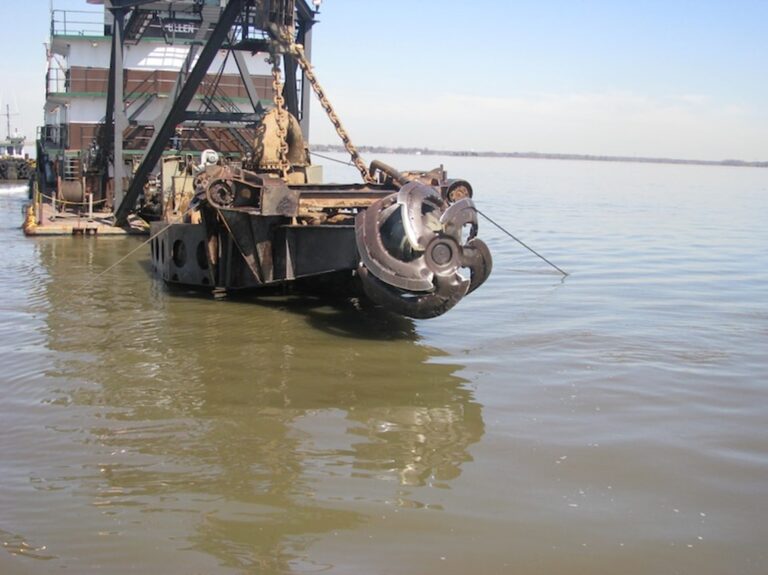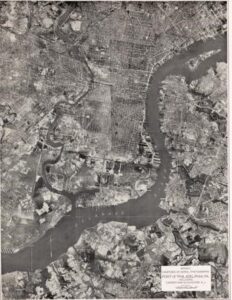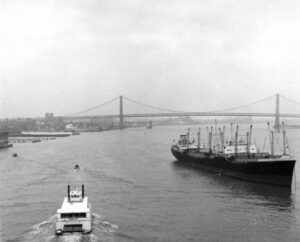Philadelphia Regional Port Authority
Essay
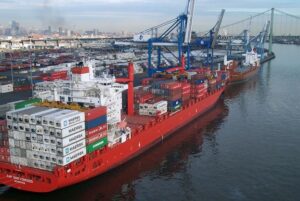
The Philadelphia Regional Port Authority, or PhilaPort, is an independent agency of the Commonwealth of Pennsylvania whose mandate is to govern port facilities and activities on the Pennsylvania side of the Delaware River. The river serves as a busy commercial highway and has supported the growth and development of Philadelphia since well before the city and port were incorporated in the early eighteenth century. While port governance has changed over the years, the port remains a significant economic engine for Philadelphia and its environs.
Since the founding of the city in 1682, Philadelphia’s port has been a center of international commerce, enabling trade with distant markets in Europe and the Caribbean. William Penn (1644-1718) incorporated the port at the same time as the City of Philadelphia in the Charter of 1701. From the decades following its establishment through the first part of the twentieth century, the port operated under city supervision. The Department of Wharves, Docks, and Ferries, a division of the City of Philadelphia’s Department of Commerce, oversaw the construction and maintenance of piers and port facilities. The department’s director was authorized to make surveys and soundings, prepare plans, and regulate, fix, and establish bulkhead and pierhead lines and distance between piers, and set rules and regulations for wharves, piers, and bulkheads.
The building and maintenance of port facilities, however, was costly and a financial burden for the city. In 1965, the city separated the port from its budget by creating the Philadelphia Port Corporation with authority to issue municipal bonds for the purpose of improving and expanding the port. The corporation serviced its debt by leasing the port facilities to private shipping and cargo companies. In exchange, the City Corporation marketed the port.
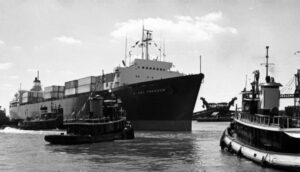
State Assumes Control
By the late 1980s, the Port Corporation was not adequately managing its facilities. The city-run agency posted a $7 million operating deficit in 1988 and could not afford to repair existing facilities, much less invest in new ones. Aware of the city’s inability to effectively manage the port, Mayor W. Wilson Goode Sr. (b. 1938), asked the state to assume control.
In 1989, the Pennsylvania State Legislature passed, and the governor signed, legislation creating the Philadelphia Regional Port Authority. The new state-run authority freed Philadelphia from a multimillion dollar drain on its annual budget, including port operating costs and debt service on bonds, while also making state funds available for capital and marketing projects at the port.
Enabled by the Philadelphia Regional Port Authority Act (P.L. 291, No. 50, Cl. 53) of 1989, the agency was empowered to manage, lease, acquire, and own port facilities, port-related projects, and equipment within the port zone. PhilaPort’s jurisdiction runs along the Delaware River beginning with Pennsylvania’s border with the state of Delaware in Delaware County, through Philadelphia County, ending in upper Bucks County and encompassing up to a mile inland from the river. As with other port authorities, PhilaPort was authorized to borrow money, make and issue negotiable notes, bonds, and other evidences of indebtedness or obligations of the authority, and secure the payment of such bonds. PhilaPort also acquired the power of eminent domain and zoning supersession, which it can exercise when necessary to locate port facilities. The authority was granted such powers by the legislature to ensure that Philadelphia’s port could compete with other ports and provide economic development benefits statewide.
PhilaPort was created to enhance trade and commerce along the Delaware River while also contributing to economic development and job creation. Its approach to economic development has been three-tiered. First, it has encouraged the use, growth, and development of its own terminal and port facilities. Second, it promotes ports within Pennsylvania. Third, it encourages the extensive use of the Delaware River. The port is responsible for thousands of direct jobs, such as those held by workers on docks, and indirect jobs that include warehouse employees in the Philadelphia area and throughout Pennsylvania. PhilaPort manages fifteen facilities: Tioga Marine Terminal, Tioga Liquid Bulk Terminal, 3200 E. Tioga, Piers 78 & 80, Pier 82, Pier 84, Piers 96, 98, & 100, Packer Avenue Marine Terminal, Pier 98 Annex, Pier 122, Pier 124, Southport Auto Terminal, PhilaPort Distribution Center, Philadelphia Wholesale Produce Market, and Citizens Bank Regional Maritime Training Center. PhilaPort is a “landlord port,” meaning that it leases its facilities to private operators. In 2021, PhilaPort was the thirteenth largest port in the country when measured by TEUs (twenty-foot equivalent units) handled, with 435,833.74 TEUs.
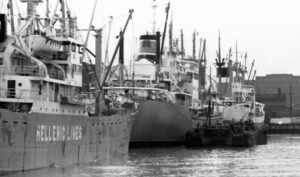
Big 2016 Investment by State
In November 2016 Governor Tom Wolf (b. 1948) unveiled a $300 million state investment to fix ship berths, buy new cranes, update and relocate warehouses, and double cargo-handling space. The investment, made possible by a bond, was expected to create two thousand waterfront jobs and nearly seven thousand jobs for truckers, rail workers, suppliers, and port-related businesses, as well as jobs for construction workers. The investment came at a time when competition among East Coast ports was particularly fierce in light of the Panama Canal expansion, completed in June 2016, that allowed larger ships to bring goods from Asia. The investment spearheaded a development plan and signaled the commonwealth’s commitment to creating and maintaining a robust and efficient port.
The authority rebranded itself as PhilaPort in 2017. The port board of directors and staff felt that the authority needed a new, more memorable and recognizable name, particularly to distinguish it from the neighboring Delaware River and Bay Authority (DRBA) and the Delaware River Port Authority (DRPA). On the heels of the $300 million state investment, the name change was part of an aggressive effort to market Philadelphia to shippers around the world.
Investment in PhilaPort, in addition to the rebranding, was driven in large part by the dredging of the Delaware River. The decades-long plan to deepen 103 miles of the river along the Pennsylvania, New Jersey, and Delaware shoreline from forty to forty-five feet was completed in February 2020. Led by the United States Army Corps of Engineers, the project was devised to allow bigger ships, which were expected to be traveling from the expanded Panama Canal, to navigate the river more easily. Further, the deeper channel allowed for more efficient transportation of containerized, dry and liquid bulk, roll-on/roll-off, and project cargoes to and from Delaware River ports.
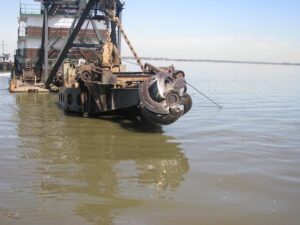
Officials at PhilaPort maintain relationships with other agencies and departments at various governmental levels. To market the Delaware River, PhilaPort coordinates with the Port of Camden across the Delaware River; the Diamond State Port Corporation, which operates the Port of Wilmington; and the Maritime Exchange for the Delaware River and Bay, which is a nonprofit trade association advocating for port and port-related business in the Delaware River region. To ensure that port operations run smoothly, the port also works with federal agencies including the United States Department of Transportation, United States Coast Guard, United States Army Corps of Engineers, United States Department of Homeland Security, and United States Customs and Border Protection.
Elizabeth M. Marcello has a Ph.D. in urban planning from Columbia University. Her scholarship is concerned with how public authorities fit into transparent and democratic planning processes. (Author information current at time of publication.)
Copyright 2023, Rutgers University.
